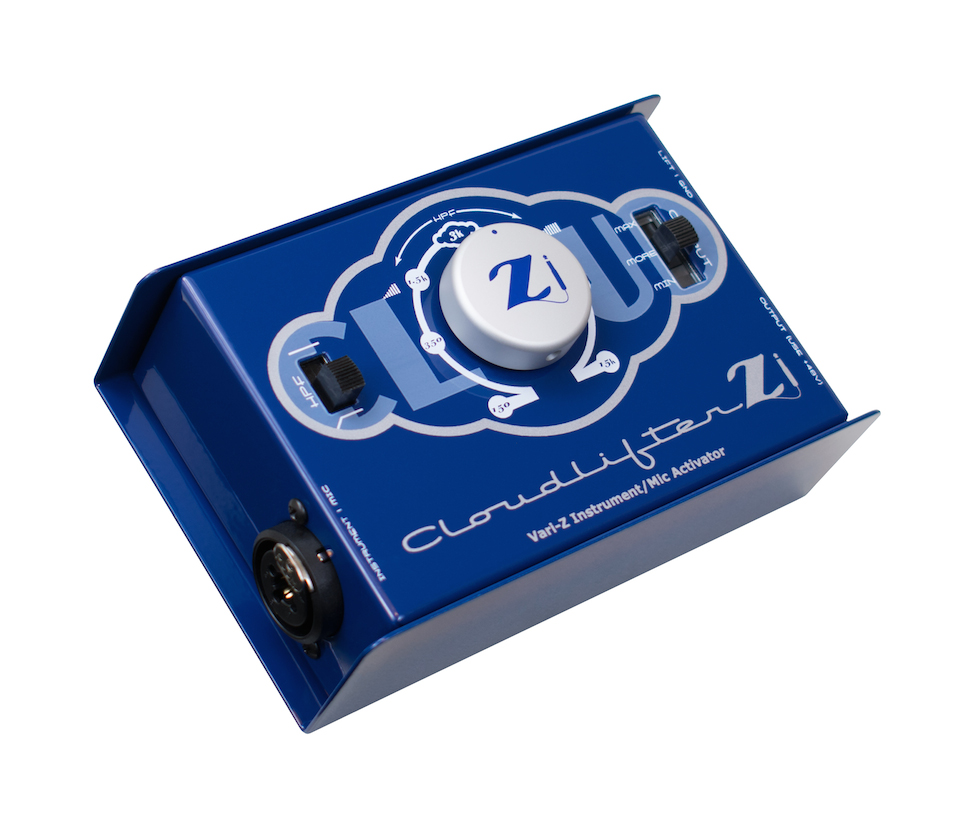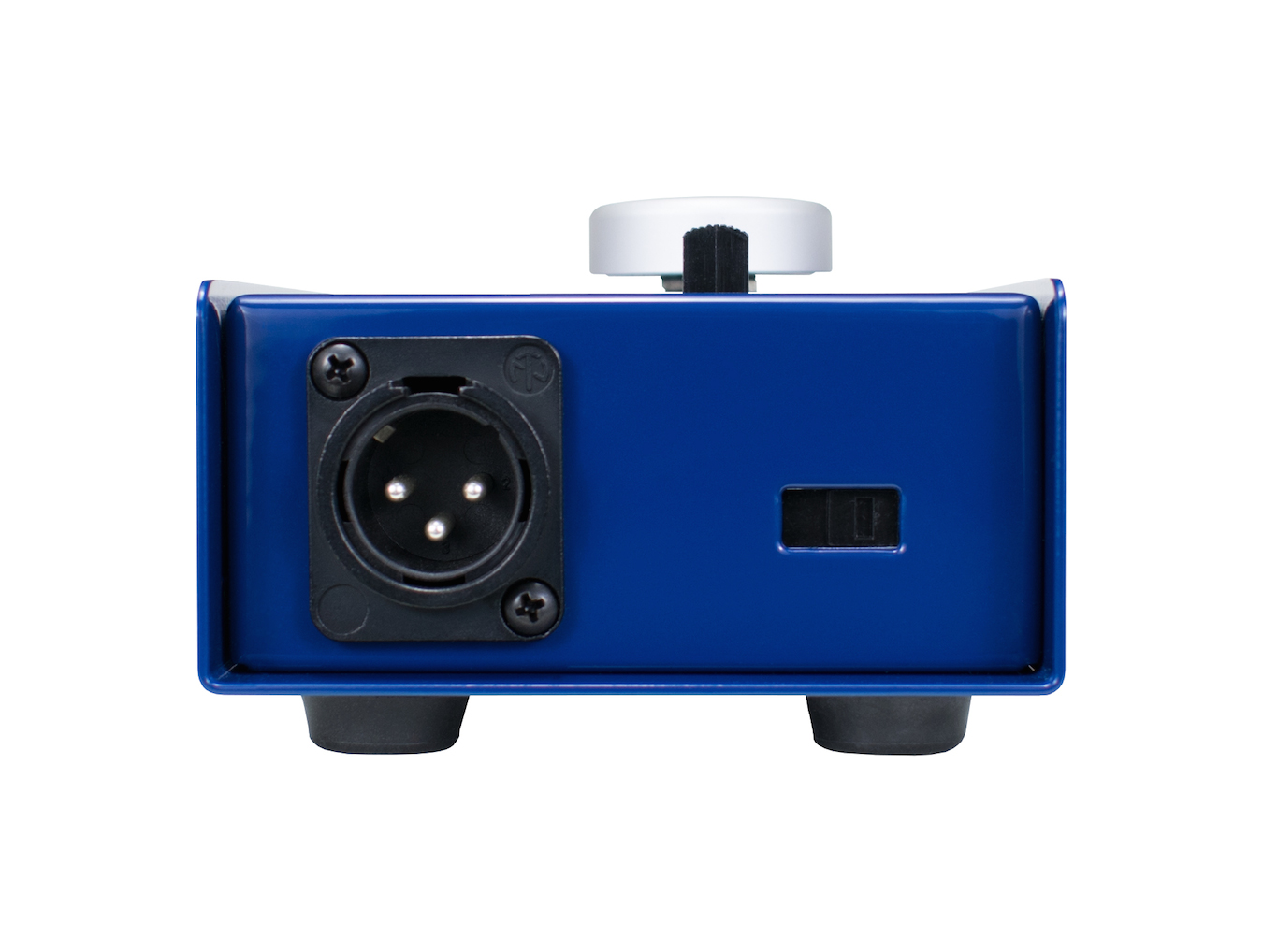New Gear Review: Cloudlifter Zi Instrument/Mic Activator by Cloud Microphones

The Cloudlifter Zi is a unique Instrument/Mic Activator with a variable “Zi” knob that enables you to alter the impedance of your signal, creating a wealth of added tonal possibilities.
Cloud Microphones of Tucson, Arizona is a manufacturer of high quality ribbon microphones and accessories.
The company’s line of high-end ribbon mics owes its lineage to the design of the classic RCA ribbons that are still seen in top studios around the world to this day.
But ribbon mics aren’t even the most notable offering Cloud brings to the table. The Cloudlifter Series, which consists of little blue boxes that add up to 25dB of “ultra-clean gain” to low gain sources, has been making waves in the pro audio community since its inception.
The most recent addition to this line, the Cloudlifter Zi, is an “Instrument/Mic Activator” that adds gain, adjusts impedance, and functions as a multipurpose DI. Let’s see what it has to offer.
Features and Use
This latest iteration of Cloudlifter series is designed for use with both microphones and instrument-level sources. For the first time, it features a large central “Zi” knob for fully variable impedance selection and high-pass filtering.
When using the Hi-Z instrument input, the effective impedance jumps up to 100x the value shown on the Zi dial for the Lo-Z mode, with an effective range of 15k ohms to over 1M ohms.
In addition to the new Zi knob, which allows you to shape tone or better match the impedance of a given microphone or instrument, the Cloudlifter Zi features a three-way output gain switch that provides “Min”, “More”, and “Max” gain in the form of +6dB, +12dB and +25dB boosts, respectively.
Via the flip of a single switch, the Zi knob can change to function as a high pass filter, capable of stretching all the way up to 4kHz. With a gentle 6dB per octave slope, this can be very useful when dealing with proximity effect in microphones.
It is also designed to be exceptionally quiet, adding significant gain without noise. To this end, the Zi contains a CineMag transformer encased in “Mu-Metal” for optimized shielding as it converts high impedance signals to low impedance signals.
In putting the Cloudlifter Zi to use, I was curious to see how it would perform with microphones that are notoriously low in output. I went through my mic locker and grabbed a Shure SM7B, a Coles 4038, and a cheap knock-off ribbon mic that I almost never use because of its quiet nature.
The Cloudlifter Zi’s three-way output gain switch brought each of these mics to life, allowing my console preamp to keep a clean and manageable signal. Even the cheap knock-off ribbon mic now had enough gain to see real use on a guitar amp. And rest assured, this little blue box keeps any phantom power from reaching your sensitive ribbon microphones.
In testing the Cloudlifter’s Zi knob, the amount of impedance delivered to the microphone imparts subtle tonal changes. Basically, you can brighten up a dark mic with more impedance, and you can darken up a bright mic with less. In layman’s terms, the most noticeable difference is in the volume change, but to a seasoned ear, it is this kind of flexibility that enables sophisticated ad subtle tonal shaping.
In session, I also used the Cloudlifter Zi as a DI on a bass track with great success. The transformer is super clean, and I used the Max output gain setting while trimming my console preamp, which created a very pleasing end result. The unit is also fitted with a ground lift, which is very useful in the Brooklyn recording scene, because you never know if there’s going to be a table saw next door actively buzzing up your signal.
Though difficult to explain the nuances that this little blue box can impart on your sound, you’ll find it relatively easy to craft satisfying results in practice and listen for the subtle changes in impedance settings for yourself.
To Be Critical
When using the Zi knob as a high pass filter, I found it to be a little confusing at first because it seemed counter intuitive that the filtering occurs when you turn the dial from right to left—the opposite direction of how a HPF would be pictured on a frequency chart. Pilot error was in full effect upon initial use of this feature in my case.
Lastly, the ground lift is not easily accessible. You’d need a key, guitar pick, or few extra millimeters on your fingernail to switch from ground to lift.
To this point, the manufacturer notes that this was indeed an intentional design choice to prevent accidental switching. And, since the unit is transformer-isolated on the Hi-Z side and direct coupled with the preamp, it should reduce the number of circumstances in which a ground lift would be needed in the first place.
Summing it Up
I’ve found that the more I use the Cloudlifter Zi, the more uses I find for it. At a $379 price point, you would be well-served to put in the work and experimentation to really grasp the unit’s complete functionality and get the most bang for your buck. To that end, here’s a great supplementary video of Roger Cloud, founder of Cloud Microphones, describing the Cloudlifter Zi and its vast functionality in even more detail.
With the Cloudlifter Zi, you get a very useful and clean gain additive that works beautifully for mics or low-level instrument signals. The variable Z control creates more tonal options than your microphone or instrument would otherwise produce, and the variable high pass filter that stretches to 4kHz goes far beyond the capabilities of most analog filters. Well done, Cloud!
Please note: When you buy products through links on this page, we may earn an affiliate commission.







